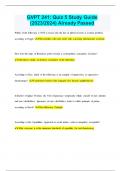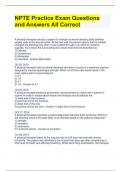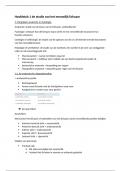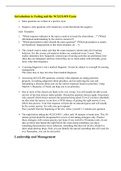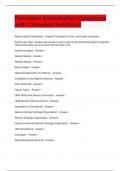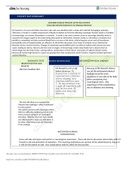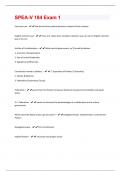International Monetary Economics
2. National income accounting and the balance of payments 4
1. Introduction 4
2. The national income accounts 4
2.1. National product and national income 4
2.2. Capital depreciation and international transfers 5
2.3. Gross domestic product 5
3. National income accounting for an open economy 5
3.1. The national income identity for an open economy 5
3.2. The current account and foreign indebtedness 6
3.3. Global imbalances 8
3.4. Saving and the current account 9
3.5. Private and government saving 9
4. The balance of payments accounts 10
4.1. The fundamental balance of payments identity 11
4.2. The current account, once again 11
4.3. The capital account 11
4.4. Statistical discrepancy 11
4.5. Official reserve transactions 11
4.6. Capital flows and exchange rates 12
5. Takeways 13
3. Exchange rates and the foreign exchange market: an asset approach 14
1. Exchange rate and international transactions 14
2. The foreign exchange market 15
2.1. The actors 15
2.2. Characteristics of the market 15
2.3. International nature of currencies 16
2.4. Spot rates and forward rates 17
3. The demand for foreign currency assets 17
4. Equilibrium in the foreign exchange market 18
4.1. The effect of changing interest rates on the current exchange rate 19
4.2. The effect of changing expectations on the current exchange rate 20
5. Extra slides 20
6. Takeaways 22
4. Money, interest rates and exchange rates 23
1. Money de ned: a brief review 23
1.1. Money as a medium of exchange 23
1
fi
, 1.2. Money as a unit of account 23
1.3. Money as a store of value 23
1.4. What is money? 23
1.5. How the money supply is determined 24
2. The demand for money by individuals 24
2.1. Expected return 24
2.2. Risk 24
2.3. Liquidity 24
3. Aggregate money demand 24
4. The equilibrium interest rate: the interaction of money supply and demand 26
4.1. Equilibrium in the money market 26
4.2. Interest rates and the money supply 27
4.3. Output and the interest rate 27
5. The money supply and the exchange rate in the short run 28
5.1. Linking money, the interest rate and the exchange rate 28
5.2. US money supply and the dollar/euro exchange rate 29
5.3. Europe’s money supply and dollar/euro exchange rate 30
6. Money, the price level, and the exchange rate in the long run 31
6.1. Money and money prices 31
6.2. The long-run effects of money supply changes 31
6.3. Empirical evidence on money supplies and price levels 31
6.4. Money and the exchange rate in the long run 32
7. In ation and exchange rate dynamics 32
7.1. Short-run price rigidity versus long-run price flexibility 32
7.2. Permanent money supply changes and the exchange rate 33
7.3. Exchange rate overshooting 34
8. Takeaways 35
5. Price levels and the exchange rate in the long run 36
1. The law of one price 36
2. Purchasing power parity 38
2.1. The relationship between PPP and the law of one price 38
2.2. Absolute PPP and relative PPP 38
3. A long-run exchange rate model based on PPP 38
3.1. The fundamental equation of the monetary approach 38
3.2. The Fisher effect 40
4. Empirical evidence on PPP and the law of one price 41
5. Explaining the problems with PPP 42
5.1. Trade barriers and nontradeables 43
5.2. Departures from free competition 43
5.3. Differences in consumption patterns and price level measurement 43
2
fl
, 6. Beyond purchasing power parity: a general model of long-run exchange rates 43
6.1. The real exchange rate 43
6.2. Demand, supply and the long-run real exchange rate 44
6.3. Nominal and real exchange rates in long-run equilibrium 45
7. Takeaways 47
3
2. National income accounting and the balance of payments 4
1. Introduction 4
2. The national income accounts 4
2.1. National product and national income 4
2.2. Capital depreciation and international transfers 5
2.3. Gross domestic product 5
3. National income accounting for an open economy 5
3.1. The national income identity for an open economy 5
3.2. The current account and foreign indebtedness 6
3.3. Global imbalances 8
3.4. Saving and the current account 9
3.5. Private and government saving 9
4. The balance of payments accounts 10
4.1. The fundamental balance of payments identity 11
4.2. The current account, once again 11
4.3. The capital account 11
4.4. Statistical discrepancy 11
4.5. Official reserve transactions 11
4.6. Capital flows and exchange rates 12
5. Takeways 13
3. Exchange rates and the foreign exchange market: an asset approach 14
1. Exchange rate and international transactions 14
2. The foreign exchange market 15
2.1. The actors 15
2.2. Characteristics of the market 15
2.3. International nature of currencies 16
2.4. Spot rates and forward rates 17
3. The demand for foreign currency assets 17
4. Equilibrium in the foreign exchange market 18
4.1. The effect of changing interest rates on the current exchange rate 19
4.2. The effect of changing expectations on the current exchange rate 20
5. Extra slides 20
6. Takeaways 22
4. Money, interest rates and exchange rates 23
1. Money de ned: a brief review 23
1.1. Money as a medium of exchange 23
1
fi
, 1.2. Money as a unit of account 23
1.3. Money as a store of value 23
1.4. What is money? 23
1.5. How the money supply is determined 24
2. The demand for money by individuals 24
2.1. Expected return 24
2.2. Risk 24
2.3. Liquidity 24
3. Aggregate money demand 24
4. The equilibrium interest rate: the interaction of money supply and demand 26
4.1. Equilibrium in the money market 26
4.2. Interest rates and the money supply 27
4.3. Output and the interest rate 27
5. The money supply and the exchange rate in the short run 28
5.1. Linking money, the interest rate and the exchange rate 28
5.2. US money supply and the dollar/euro exchange rate 29
5.3. Europe’s money supply and dollar/euro exchange rate 30
6. Money, the price level, and the exchange rate in the long run 31
6.1. Money and money prices 31
6.2. The long-run effects of money supply changes 31
6.3. Empirical evidence on money supplies and price levels 31
6.4. Money and the exchange rate in the long run 32
7. In ation and exchange rate dynamics 32
7.1. Short-run price rigidity versus long-run price flexibility 32
7.2. Permanent money supply changes and the exchange rate 33
7.3. Exchange rate overshooting 34
8. Takeaways 35
5. Price levels and the exchange rate in the long run 36
1. The law of one price 36
2. Purchasing power parity 38
2.1. The relationship between PPP and the law of one price 38
2.2. Absolute PPP and relative PPP 38
3. A long-run exchange rate model based on PPP 38
3.1. The fundamental equation of the monetary approach 38
3.2. The Fisher effect 40
4. Empirical evidence on PPP and the law of one price 41
5. Explaining the problems with PPP 42
5.1. Trade barriers and nontradeables 43
5.2. Departures from free competition 43
5.3. Differences in consumption patterns and price level measurement 43
2
fl
, 6. Beyond purchasing power parity: a general model of long-run exchange rates 43
6.1. The real exchange rate 43
6.2. Demand, supply and the long-run real exchange rate 44
6.3. Nominal and real exchange rates in long-run equilibrium 45
7. Takeaways 47
3



